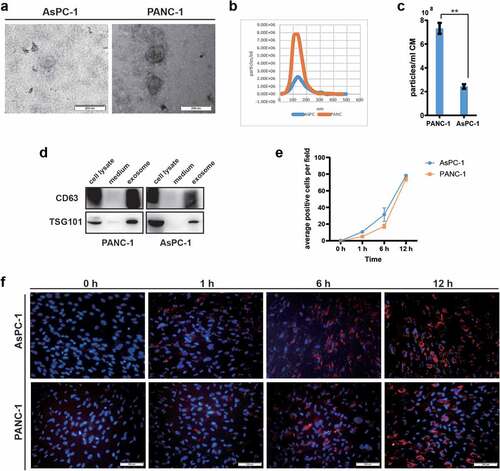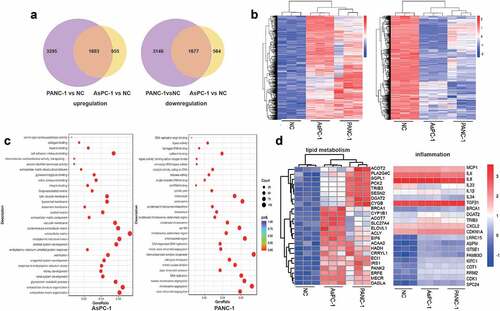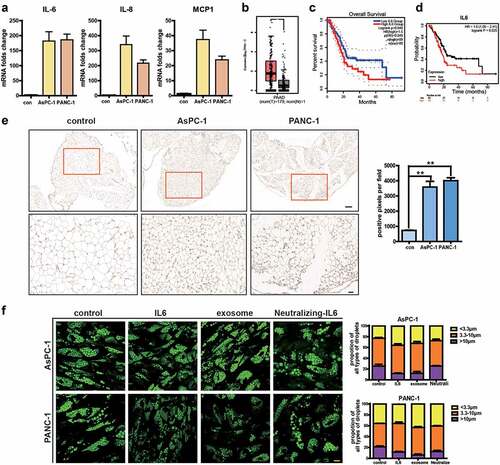Figures & data
Figure 1. Adipocytes incorporated exosomes derived from pancreatic cancer cells AsPC-1 and PANC-1.

Figure 2. PANC-1 and AsPC-1 exosomes disrupted the lipid composition of adipocytes, particularly the TAG species.

Figure 3. Pancreatic cancer exosomes stimulate lipolysis in adipocytes both in vitro and in vivo.

Figure 4. Transcriptomic analysis identifies expression changes of genes involved in metabolism and inflammation.

Figure 5. Pancreatic cancer exosomes increase IL-6 production which in turn promotes lipolysis in adipocytes.

Supplemental Material
Download Zip (1.1 MB)Data availability statement
The datasets used and/or analysed during the current study are available from the corresponding author on reasonable request.
